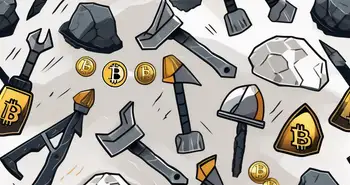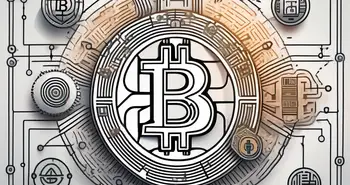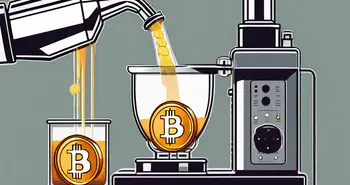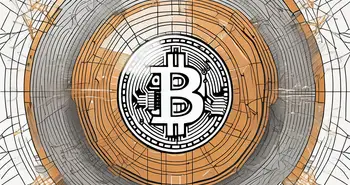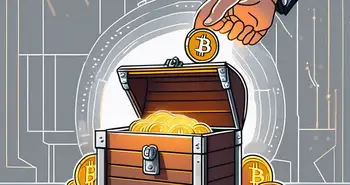What Is Bitcoin Mining, And How Does It Work?
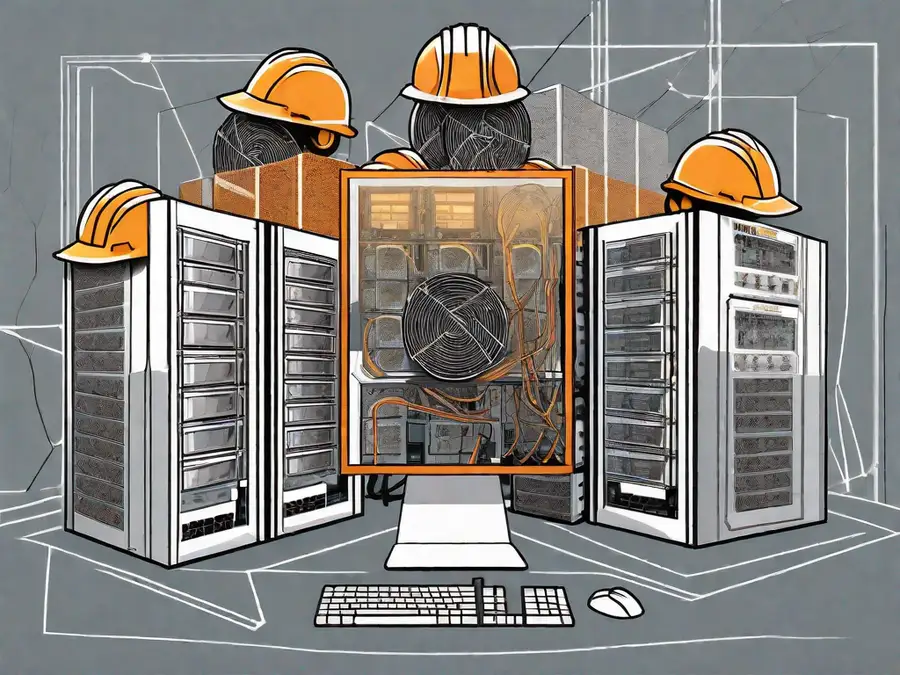
I'm thrilled to share my expertise on the fascinating topic of Bitcoin mining. As an expert in the field, I'll guide you through the concept, the technical aspects, economics, environmental impact, and even the future of Bitcoin mining. So, let's dive in and understand what Bitcoin mining is all about!
Understanding the Concept of Bitcoin Mining
Before we delve into the technicalities, it's important to grasp the basics of Bitcoin. Bitcoin is a decentralized digital currency that operates on a technology called blockchain. Unlike traditional currencies, Bitcoin doesn't rely on a central bank; instead, it relies on a network of computers that collectively validate and record transactions.
One crucial aspect of this network is the role of miners. Miners play a vital role in securing the Bitcoin network by validating transactions and adding them to the blockchain. Let's explore this further.
The Basics of Bitcoin
Bitcoin operates on a peer-to-peer network and relies on cryptographic protocols to ensure the security of transactions. Every transaction made using Bitcoin is recorded on a public ledger called the blockchain, which is visible to all participants in the network. This transparency helps prevent fraud and provides a level of trust.
Bitcoin was created in 2008 by an anonymous person or group of people using the pseudonym Satoshi Nakamoto. It was introduced as an alternative to traditional fiat currencies, with the aim of providing a decentralized and secure method of conducting financial transactions.
Unlike traditional currencies, which are issued and regulated by central banks, Bitcoin is created through a process called mining. This process involves solving complex mathematical puzzles to validate and add transactions to the blockchain. The supply of Bitcoin is limited to 21 million coins, with new coins being generated at a decreasing rate over time.
The Role of Miners in the Bitcoin Network
Miners have the responsibility of validating and adding new transactions to the blockchain. They do this by solving complex mathematical puzzles, which requires significant computational power. The first miner to solve the puzzle and add the next block of transactions to the blockchain is rewarded with newly minted Bitcoins, along with transaction fees.
Bitcoin mining is a highly competitive process, as miners compete with each other to be the first to solve the puzzle and receive the rewards. This competition has led to the development of specialized hardware known as ASICs (Application-Specific Integrated Circuits), which are designed to perform the calculations required for mining more efficiently than general-purpose computers.
In addition to validating transactions and adding them to the blockchain, miners also play a crucial role in securing the network. By participating in the mining process, miners contribute computational power to the network, making it more difficult for malicious actors to gain control and manipulate the blockchain.
As the Bitcoin network has grown, so has the complexity of the mathematical puzzles that miners must solve. This has led to an arms race in the mining industry, with miners constantly seeking more efficient hardware and techniques to stay competitive.
Now that we understand the basics, let's explore the technical aspects of Bitcoin mining.
The Technical Aspects of Bitcoin Mining
To comprehend the mining process, we need to understand how transactions are validated and added to the blockchain.
When a Bitcoin transaction is initiated, it is broadcasted to the network. Miners then collect these transactions into blocks and compete to solve the cryptographic puzzle associated with each block. This process, known as proof-of-work, requires miners to make significant computational efforts, leading to the consumption of electricity.
Once a miner solves the puzzle, they add the block of transactions to the blockchain, and the other miners in the network validate this block before moving on to the next one. This validation ensures consensus on the state of the blockchain.
The importance of the blockchain in Bitcoin mining cannot be overstated. It plays a crucial role in maintaining the integrity of Bitcoin transactions. The blockchain acts as a decentralized ledger, ensuring transparency and preventing double-spending. Every miner in the network possesses a copy of the blockchain and can verify the validity of transactions.
But how does the blockchain achieve this level of security and trust? Let's delve deeper.
The blockchain is a distributed database that stores all the transactions ever made in Bitcoin. It consists of a series of blocks, each containing a list of transactions. These blocks are linked together using cryptographic hashes, forming a chain of blocks – hence the name “blockchain”.
Each block in the blockchain contains a reference to the previous block, creating a chronological order of transactions. This reference is achieved through the use of a hash function, which takes the data of the previous block and produces a unique hash value. This hash value is then included in the header of the current block, ensuring the immutability and integrity of the entire chain.
Furthermore, the blockchain is maintained by a decentralized network of miners who compete to solve complex mathematical puzzles. This competition ensures that no single entity can control the blockchain or manipulate the transaction history. The decentralized nature of the blockchain makes it resistant to censorship and tampering.
Now, let's shift our focus to the economics of Bitcoin mining.
The Economics of Bitcoin Mining
Bitcoin mining involves costs, profitability, and risks. Let's explore these aspects in detail.
The Costs Involved in Bitcoin Mining
Bitcoin mining is a resource-intensive process that requires high-powered hardware and substantial electricity consumption. Miners need to invest in specialized equipment and cover ongoing operational expenses. Additionally, as the mining difficulty increases over time, miners may need to upgrade their equipment to remain competitive.
Investing in the right hardware is crucial for miners. High-powered mining rigs, such as ASIC (Application-Specific Integrated Circuit) machines, are designed specifically for Bitcoin mining. These rigs are expensive, but they offer superior performance and efficiency compared to traditional computer hardware. Miners also need to consider the cost of cooling systems to prevent their equipment from overheating during the mining process.
Electricity consumption is a significant cost factor in Bitcoin mining. The energy-intensive nature of the process requires miners to have access to cheap and reliable electricity. Some miners choose to set up their operations in regions with low electricity costs or renewable energy sources to minimize expenses.
Furthermore, ongoing operational expenses include maintenance, repair, and replacement of mining equipment. As mining hardware works around the clock, it is subject to wear and tear, and components may need to be replaced periodically. These costs need to be factored into the overall economics of Bitcoin mining.
Profitability and Risks in Bitcoin Mining
The profitability of Bitcoin mining depends on several factors, including the price of Bitcoin, mining difficulty, electricity costs, and hardware efficiency. Fluctuations in any of these factors can impact profitability.
When the price of Bitcoin is high, mining becomes more profitable as miners can sell their mined coins at a higher value. Conversely, a drop in Bitcoin's price can reduce profitability or even lead to losses. Miners need to carefully monitor market trends and adjust their strategies accordingly.
Mining difficulty refers to the complexity of solving the mathematical puzzles required to validate Bitcoin transactions and add them to the blockchain. As more miners join the network, the difficulty level increases. Higher mining difficulty means more computational power is required, which translates into higher electricity costs. Miners must continuously evaluate their operations' profitability and consider upgrading their equipment to maintain competitiveness.
Electricity costs play a significant role in determining profitability. Miners need to strike a balance between the cost of electricity and the potential rewards from mining. Some miners choose to relocate their operations to areas with cheaper electricity rates or explore renewable energy options to reduce costs.
Hardware efficiency is another crucial factor. More efficient mining equipment consumes less electricity while providing higher computational power. Miners need to stay updated with the latest technological advancements and invest in efficient hardware to maximize profitability.
While Bitcoin mining can be profitable, it also involves risks. Price volatility is a significant risk factor. The value of Bitcoin can fluctuate dramatically within short periods, impacting miners' profitability. Regulatory changes and government interventions in the cryptocurrency space can also pose risks to mining operations. Miners need to stay informed about legal developments and adapt their strategies accordingly.
Now, let me share a fictional personal story to illustrate how crucial it is to stay informed as a miner.
Imagine a miner named John who began mining Bitcoin during a period of low mining difficulty. He invested in state-of-the-art mining equipment and enjoyed significant profits. However, as the mining difficulty increased and the price of electricity went up, John found his profitability declining.
To mitigate this, John decided to join a mining pool. Mining pools allow multiple miners to combine their computational resources, increasing their chances of earning Bitcoin rewards. By pooling resources with other miners, John was able to offset some of the rising costs and maintain a steady income from his mining operation.
This fictional story highlights the importance of adaptability and staying informed in the dynamic world of Bitcoin mining. Miners must continuously assess market conditions, adjust their strategies, and explore innovative solutions to navigate the risks and maintain profitability.
Now, let's explore the environmental impact of Bitcoin mining and possible solutions.
The Environmental Impact of Bitcoin Mining
Concerns about the environmental impact of Bitcoin mining have arisen due to its significant electricity consumption. While traditional banking systems also consume substantial energy, it's essential to address the sustainability aspect of Bitcoin mining.
Bitcoin mining consumes a substantial amount of electricity due to the computational power required to solve complex puzzles. This has led to criticisms regarding the carbon footprint associated with the process. However, it's worth noting that renewable energy sources and advancements in hardware efficiency can contribute to a greener future for Bitcoin mining.
One of the major challenges in Bitcoin mining is the energy consumption required to power the mining rigs. These rigs consist of powerful processors and graphics cards that require a constant supply of electricity to perform the complex calculations necessary for mining. As a result, the energy consumption of the Bitcoin network has been compared to that of entire countries.
However, the Bitcoin mining industry is not oblivious to these concerns. Miners and industry stakeholders are actively exploring alternative energy sources to mitigate the environmental impact. Solar and wind power are being considered as viable options for powering mining operations. By harnessing the energy from the sun and wind, miners can reduce their reliance on fossil fuels and significantly decrease their carbon footprint.
Furthermore, technological advancements in hardware efficiency are continually minimizing energy consumption in Bitcoin mining. As the demand for mining increases, companies are investing in research and development to create more energy-efficient mining rigs. These new rigs are designed to perform the same calculations with less power, thus reducing the overall energy consumption of the Bitcoin network.
Regulatory incentives also play a crucial role in creating a more sustainable landscape for Bitcoin mining. Governments around the world are recognizing the environmental concerns associated with cryptocurrency mining and are implementing policies to encourage the use of renewable energy sources. By providing tax breaks and other incentives, governments can incentivize miners to adopt greener practices and contribute to a more sustainable future.
Finally, let's take a peek into the future and explore what lies ahead for Bitcoin mining. As technology continues to advance, it is likely that the energy consumption of Bitcoin mining will decrease even further. New innovations in hardware design and energy storage are on the horizon, promising even greater efficiency and sustainability in the mining process.
In conclusion, while the environmental impact of Bitcoin mining is a valid concern, the industry is actively working towards finding sustainable solutions. Through the adoption of renewable energy sources, advancements in hardware efficiency, and regulatory incentives, Bitcoin mining can become more environmentally friendly. As we look to the future, it is evident that the industry's commitment to sustainability will continue to drive innovation and create a greener landscape for Bitcoin mining.
The Future of Bitcoin Mining
The field of Bitcoin mining is constantly evolving, driven by technological advancements and regulatory developments. Let's discuss some of the potential future trends.
Technological Advancements in Bitcoin Mining
New technologies, such as application-specific integrated circuits (ASICs) and more efficient mining algorithms, are continually being developed. These advancements aim to enhance mining efficiency, reduce energy consumption, and increase the profitability of miners. Additionally, improvements in mining hardware will likely lead to a decline in entry barriers for prospective miners.
Regulatory Challenges and Opportunities for Bitcoin Mining
The regulatory landscape surrounding Bitcoin mining varies across jurisdictions. Some countries embrace it as an opportunity for economic growth, while others approach it cautiously. As regulators gain a better understanding of the technology and its implications, it's crucial to strike a balance between ensuring consumer protection and fostering innovation in the mining industry.
To wrap up, Bitcoin mining is not only a technical process but also an economic and environmental endeavor. Understanding its concept, grasping the technical aspects, and considering the future trends are all essential for anyone interested in this exciting field. By staying informed and adapting to changing circumstances, miners can navigate the challenges and seize the opportunities presented by Bitcoin mining.
I hope this article has provided you with valuable insights into the world of Bitcoin mining. Now, go forth and explore the possibilities!
As you consider the potential of stock trading and the broader cryptocurrency landscape, why not expand your investment horizon with Morpher? At Morpher.com, you can leverage the power of blockchain technology to trade across a multitude of asset classes, including cryptocurrencies, without the burden of fees or liquidity constraints. With the ability to engage in fractional investing, short selling, and up to 10x leverage, Morpher offers a unique and flexible trading experience that aligns perfectly with the innovative spirit of crypto mining. Take control of your investments with the safety of the Morpher Wallet and explore new market opportunities today. Sign Up and Get Your Free Sign Up Bonus to embark on a transformative trading journey with Morpher.

Disclaimer: All investments involve risk, and the past performance of a security, industry, sector, market, financial product, trading strategy, or individual’s trading does not guarantee future results or returns. Investors are fully responsible for any investment decisions they make. Such decisions should be based solely on an evaluation of their financial circumstances, investment objectives, risk tolerance, and liquidity needs. This post does not constitute investment advice.

Painless trading for everyone
Hundreds of markets all in one place - Apple, Bitcoin, Gold, Watches, NFTs, Sneakers and so much more.

Painless trading for everyone
Hundreds of markets all in one place - Apple, Bitcoin, Gold, Watches, NFTs, Sneakers and so much more.



